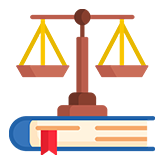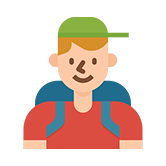HEALTH AND FAMILY WELFARE
The Government of Karnataka has given significant importance to the health sector and Provision of good health care to the people is an essential component of the health strategy adopted by the State. The State has made substantial progress in building credible health infrastructure at different levels.
Health Indicators
The State has a wide institutional network providing health services both in urban and rural areas. Karnataka has performed in population control with total fertility rate reaching 1.7 by 2020 (As per NFHS 2019-20). The infant mortality has declined faster during the last few years and has reached 23 in 2020 (As per SRS 2018) from 35 in 2011 which is almost 12units reduction per 1000 live births in a span of 12 years.
Family Welfare
The State offers an excellent family welfare programme operating through the existing health infrastructure. The main objective of the programme is to provide better health services in general and family planning services in particular to check the rapid growth of population.
National Rural Health Mission (NRHM) was launched on 12th April 2005 by the Government of India to improve medical facilities in the rural areas of the country. It is modified as National Health Mission by combining the primary health care services to the urban and rural population.
Tuberculosis in Karnataka
National Tuberculosis Elimination Program (NTEP) erstwhile Revised National Tuberculosis Control Program (RNTCP) was implemented in the State from 1998 and the entire State was covered in 2004.More than 90000 TB patients put on treatment annually in Karnataka TB program. Currently 1278 contractual employees are working for TB across the state. State TB cell under “Karnataka State Health and Family Welfare Society – TB Programme” and 31 districts TB Centres under “District Health Society – TB Programme” have been established to supervise and monitor the implementation of this Programme effectively. The total lost to follow up rate which was 10% in 2009 is reduced to 4 % in 2020 and death rates have decreased from 8% in 2009 to 6% in 2020 despite high HIV – TB burden. The success rates of TB treatment have improved to 82%.
TB Notification and Nikshay Registration
A total of 20095 TB cases have been notified from private sector in 2019 and in this current year despite of COVID-19 pandemic 14912 cases have been notified so far from January 2020 to November 2020.
CBNAAT (Cartridge Based Nucleic Acid Amplification Test) and Trunat
During Covid19 Pandemic
Pilots in Karnataka which have become National Policies are:
The current strategy of TB is as envisaged in the sustainable development goals (SDG) and it is called “The END TB STRATEGY.”
National Leprosy Eradication Programme
Introduction
The prevalence rate of leprosy as dropped in Karnataka from 40/10000 population in the year 1986 to 0.19/10000 population in November 2020 (Provisional).
Activities under NLEP
Surveillance for Leprosy (ACD& RS)
Active Case Detection and Regular Surveillance for Leprosy (ACD& RS):
Virtual Training of Division wise Medical officers, Health workers and ASHA, as a newer initiative Training of RBSK, RKSK and UHC is undertaken and completed this month. Intensified training will be given to Health workers and the Medical Officers to diagnose leprosy cases at the peripheral health centres itself through Virtual meeting.
Special Drive to remove stigma surrounding leprosy and prevent discrimination was planned in the form of Sparsh Leprosy Awareness Campaign Anti Leprosy fortnight – (30th Jan to Feb 13th) of every year.
Welfare measures for the Persons Affected by Leprosy
National Programme for Control of Blindness
The National Programme for Control of Blindness was started in 1976 as a Centrally Sponsored Scheme to counter the problems of Blindness due to various factors and also to reduce the prevalence of Blindness to 0.3% by 2020. The present prevalence rate of blindness is 1% as per National Survey 2006-07.
The Integrated Disease Surveillance Project (IDSP)
The Integrated Disease Surveillance Project was launched in 2005 and became programme in the year 2012. To improve the efficiency of the existing surveillance activities of disease control programs and facilitate sharing of relevant information with health administration community and other stakeholders so as to detect disease trends over time and evaluate control strategies.
Integrated Health Information Platform (IHIP)
Along with the 6 other States IHIP is launched on 26th November 2018 Secretary. Health MOHFW GoI in the Karnataka State. The reporting for “L” and "P” Forms under the IHIP is 59% and 63% respectively for the month of November 2020.
Other Major Health Programme Initiatives
The Department of health and family welfare services implements various National and State health programs of public health importance and also provides comprehensive health care services to the people of the State through various types of health and medical institutions.
The Ambulances are stationed strategically in all Districts and taluks across Karnataka so they can reach the incident location within the shortest possible time anywhere in the state. The services are operated through a centralized Emergency Response Center located at Bangalore. At present there is one ambulance for every 85000 populations with a total of 711 Ambulances throughout the state.
This service can be utilized by any individual who requires emergency help (Medical Police or Fire) irrespective of his economic status caste creed color ethnicity gender and/or literacy levels. The process of calling for an ambulance is simplified to such an extent that a call to the toll-free number '108' with details of emergency the number of people involved and the incident location supported with a landmark; would trigger an ambulance dispatch. This is an absolutely FREE SERVICE starting from the phone call till the point of reaching the hospital.
The medical emergencies can be availed for Accident and Trauma (Vehicular and non- vehicular) complaints related to Cardiac Respiration Diabetes pregnancy Stroke/Convulsions Suicide attempts Poisoning cases Assault/Violence Animal Attacks Neonatal Building Collapse Fire Burns hazardous material ingestion etc.
The first aid and medical care during the “Platinum Ten Minutes” is paramount to save the life of an accident victim hence the pioneering attempt to start motorbike ambulance service.
The motorbike ambulance service is another pilot and pioneering initiative to ensure first aid to the victims during the Golden Hour They are useful for negotiating the small streets and heavy traffic in the large urban areas where it would be difficult to move ambulances through crowds. The fleet of high-powered touring motorcycles are available when required to respond to various trauma/medical incidents.
The Bike ambulances will be currently deployed in Bangalore (19 Nos) Mangalore (2 Nos) and one each to the corporation areas of Mysore Kalburgi Belagavi Hubli -Dharwad Davanagere Tumkur Vijayapura Shimoga and Kolar Districts where heavy traffic congestion and narrow streets would be easily overcome by the agile nature of the bikes. The programme will be implemented through GVK-EMRI who are already experience in providing such services through Arogya Kavacha-108. Riders are paramedics or EMTs who are recruited and trained on managing emergencies. Motorbike ambulance drivers would be fully trained in rendering first aid and would start resuscitation measures to save the victim.
Two-wheelers by virtue of their size could manoeuvre through narrow and busy roads and reach accident spots with ease while they would be followed by a fully equipped four-wheel ambulance for shifting the victim to a nearest hospital for further treatment if necessary.
Bike ambulance is able to respond to a medical emergency much faster than an ambulance or a car in heavy traffic which can increase survival rates for patients suffering cardiac arrest/ accident/ other emergencies.
Arogya Sahayavani-104 call centre is situated at IT Park Hubli and Sir. C V Raman Nagar Hospital with a capacity of 100 seater each. People (Citizens) from any part of the state can avail their service by calling 104. From April 2019 to Nov 2019 4502245 calls are received at the call centre out of which 4483234 calls are provided with the different services.
VatsalyaVani call center will offer the below services throughout the state:
The ASHA's work consists mainly of five activities:
In addition to above work raising the awareness on health issues mentioned below:
Counselling services:
She is also working as a Member Secretary for Village Health, Sanitation and Nutrition Committee in rural area and for Mahilaarogyasamithi in urban area. Providing the legal framework to ASHA work, the certification process has been taken up. The main objective of the Certification of ASHAs is enhance the skill and competencies, through skill assessment and knowledge. MoHFW, GOI, has made the tripartite MOU between NIOS, NHSRC and MOHFW for conducting the Certification of ASHA. 303 ASHAs successfully completed 10 days refresher training along with Internal assessment, External evaluation and Theory examinations.
In addition to the incentive provided by NHM, Govt. Of Karnataka has provided the Rs.3500 as monthly fixed incentive since September 2017 onwards and as of by Enhancing Rs.500 ASHA is getting Rs.4000 as monthly fixed incentive from 1 November, 2019.
“Ayushman Bharat-Arogya Karnataka” Scheme: Government of Karnataka has been very proactive in the goal of providing health care to its residents from a long time. Yeshasvini scheme the first such scheme was initiated in 2003. Later Suvarna Arogya Suraksha Trust was established in 2009 with the specific objectives of implementing health schemes. The first scheme was Vajpayee Arogyashree Scheme which provided cashless treatment for tertiary care to BPL families. In 2014 Rajiv Arogya Bhagya was introduced for APL families for tertiary care. About 250386 patients benefitted from VAS and RAB since their inceptions under VAS and RAB. RSBY Scheme provided secondary health care services to 62 lakh families in an insurance mode and about 168377 beneficiaries availed treatment under this scheme from the year 2016 till its closure on August 2018.
In line with the policy goals of the “Karnataka Integrated Public Health Policy 2017” which envisages merging all social health insurance schemes into a single health assurance plan to improve efficiency and outreach and to achieve the goal of Universal, Equitable and Sustainable healthcare as envisaged in the Vision document-2025; all the existing schemes were merged and “Arogya Karnataka” a Universal Health care Scheme was launched on 2/3/2018, wherein cashless treatment upto Rs. 2.00 lakh for specified 1516 secondary, tertiary and emergency health care treatments was provided in an Assurance Mode based on eligibility criteria as per the National Food Security Act 2013. 19 lakh APL families are also covered for financial assistance upto 30% of the package rates.
Government of India has come out with its own scheme called Ayushman Bharat - National Health Protection Mission, on 25.9.2018, later renamed as PradhanMantri Jan ArogyaYojana (PMJAY), to provide health protection to over 10 Crore poor families identified based on the latest SocioEconomic Caste Census (SECC) data, (50 crore beneficiaries). Since both Arogya Karnataka and Ayushman Bharat have the same goal, scope and similar modalities for providing specified treatments to the poor and vulnerable sections of society, integrating both the schemes was imperative for smooth implementation especially at the field level. A single integrated scheme under a co-branded name as “Ayushman Bharat-Arogya Karnataka” is now being implemented in an Assurance Mode.
A MoU has been signed with National Health Agency, Government of India in order to implement this integrated scheme on 30/10/2018. The Government Order No. HFW 69 CGE 2018 dated 15.11.2018 was issued for implementation of integrated Ayushman Bharat-Arogya Karnataka scheme. This is the only scheme at present that covers beneficiaries of all the other hitherto existing schemes and is an Universal Health Coverage Scheme.
Entitlement and Eligibility for availing the scheme are as below;
Enrolment of patients:
AB-ArK Card:
Cost of treatment to be borne by the Government
For “Eligible Patients” the financial assistance up to Rs.5.00 lakh will be provided for specified simple secondary care, complex secondary health care, tertiary health care and emergency health care per annum, for a family. This will be on family floater basis meaning one or more persons of the family can use the full cover of Rs. 5.00 lakhs. One person can also use the entire Rs.5.00 lakh. For “General Patient” the benefit limit is 30% of Government package rates, with overall annual limit of Rs.1.50 lakh per family, per year on co-payment basis.
Under integrated Ayushman Bharat Arogya Karnataka scheme, the treatments provided for primary health care and benefit packages are as follows;
Jyothi Sanjeevini Scheme (JSS):
This health assurance scheme is specifically for the benefit of all State Government Employees and their dependents without any cap on the financial limit and the treatment is totally cashless. The scheme was launched on 20-01-2015. The only expenditure to be borne by the beneficiary is:
During the current financial year (2019-20) from April 2019 till November 2019, a total of 888 employees have availed benefit and an amount of Rs.597.78 lakhs has been paid to the network hospitals for treating these beneficiaries.
Organ Transplant Scheme:
Government of Karnataka has implemented the 'Organ Transplantation Scheme' for poor/BPL patients of Karnataka, vide GO No. HFW 64 FPE 2018, Bengaluru, dated: 3-12-2018.
Main features of the scheme are as under;
Eligibility:
Referral:
Treatment & Benefit packages
Suvarna Arogya Suraksha Trust (SAST) is the nodal agency to implement the scheme. SAST will be responsible for empanelment of private hospitals, pre-authorization and payments for transplants to hospitals as per the mechanism followed in the Ayushman Bharath-Arogya Karnataka Scheme.
COVID-19
The Government of Karnataka has proactively initiated various measures to combat ongoing COVID-19 pandemic. In the beginning treatment was carried out only in the Public Health Institutions later private hospitals, nursing homes and other licensed health facilities have been permitted for treatment of COVID 19 patients. 108 ambulance facilities has been provided for the admission of COVID 19 infected, referred from the public health authority. For infected patients injection Remedesivir has been supplied and treatment facility provided by SAST. The treatment cost has been funded by the AB-ARK. Totally 894 hospitals empaneled of which 216 government and 678 private hospitals. Department has taken necessary steps to ensure the availability of Quality Drugs, Remedesivir injections, adequate medical oxygen, Hand Sanitizer and adequate masks as per the National Pharmaceutical Prizing Authority, New Delhi Guidelines. Drug testing laboratories are purchasing high capacity equipment for analysis of drug samples.
Jyothi Sanjeevini Scheme (JSS)
This health assurance scheme is specifically for the benefit of all State Government Employees and their dependents without any cap on the financial limit and the treatment is totally cashless. During the current financial year (2020-21) from April 2020 till November 2020, a total of 869 employees have availed benefit and an amount of Rs.547.62 lakhs has been paid to the network hospitals for treating these beneficiaries.
Implementation Performance
Child Health Programme: The Child Health Programme comprehensively integrates interventions that improve child survival and addresses factors contributing to Infant and Under 5 Mortality. Many initiatives have been taken up to provide preventive promotive curative & rehabilitative health care services through evidence-based interventions like Facility Based New born Care (SNCU NBSU NBCC) Home Based Newborn Care Janani Shishu Suraksha Karyakrama (JSSK) Child Death Review Kangaroo Mother Care and Lactation Clinic Integrated Management of Neonatal & Childhood Illnesses (IMNCI) and Intensified Diarrhoea Control Fortnight (IDCF).
Child Health Achievements
The following programmes and activities are being carried out in Karnataka to reduce the U5MR, IMR and NMR in the Child Health Section:
New Born Care Corner (NBCC): 1070 NBCC are functioning at all delivery points as on 2016. Newborn care corners are established in labour rooms &Operation Theatres in all the 24X7 PHCs CHCs Taluk Hospitals and District hospitals.
New Born Stabilization Units (NBSU): 165 NBSUs are functioning as on 2016. NBSUs have been established in all First Referral Units (FRUs) and Taluk Hospitals.
Special Newborn Care Unit (SNCU): 42 SNCUs are functioning at all district hospitals & government medical college hospitals and some high performing Taluk hospitals. At present 877 beds with an average of 70,000 newborn admissions at all functional SNCUs in the State. Establishment 8 SNCUs at Taluka hospital are in pipeline (at Hospet, Humnabad, Jewargi, Sira, Holenarasipura, KR Pete, Gokak & CV Ramannagar)
SNCU Online Monitoring Software: All 42 SNCUs are now integrated with the SNCU Online Monitoring Software at their units.
Kangaroo Mother Care wards: Kangaroo Mother Care (KMC) ward and Lactation Clinics are being established in all the District Hospitals adjacent to SNCUs to strengthen the supportive care to the newborn. KMC wards are established in all hospitals with SNCUs and health care personals are trained in KMC at state level. Further community KMC will be rolled out in order to increase the survival of low birth weight babies.
Lactation Clinics: Lactation clinics are established in district hospitals to increase the early initiation of breast feeding and exclusive breastfeeding rates. This will be established at all the delivery points and further existing lactation clinics will be upgraded to lactation management centres and mothers will be supported to store the expressed breast milk.
Neonatal Transportation: Neonatal ambulances ensemble with intensive care will be provided for four divisions to transfer sick neonates. This will be rolled out to all other districts based on the experience of piloting.
National Urban Health Mission:
Preamble: National Urban Health Mission was launched on May 1 2013 as a sub-mission of the National Health Mission (NHM) to strengthen the primary health care system in cities & towns to provide essential primary health services to the entire urban population and Special focus on People living in listed unlisted slums and other low income neighborhoods All other vulnerable population such as homeless rag-pickers street children rickshaw pullers and other temporary migrants.
It aims to improve the health status of the urban poor particularly the slum dwellers and other staged sections by facilitating equitable access to quality health care through a revamped public health system partnerships and with the active involvement of the urban local bodies.
Considered all districts and state headquarters and towns and cities with more than 50000 populations are incorporated and implemented in all 79 cities and towns of Karnataka as per the Government of India guidelines. Totally 364 Urban Primary Health Centers (UPHCs) out of which 204 UPHCs are in Non-Metro and 160 UPHCs (Including 27 Maternity Hospital) are in Metro city which comes under urban development department. All the 364 Urban Primary Health Centers (UPHC) 9 Urban Community Health Centres (UCHC)/Referral Hospital 8 Mobile Medical Units (MMUs) 49 Health KIOSKs and 2 Transit clinics are implemented in urban area with inter-sectoral coordination with urban development and Municipalities.
The NUHM activities are implemented in Metro city through BCH&FWS constituted during 2014-15 but made more functional from 2016-17 onwards. The BBMP has 198 wards which includes the 135 wards of erstwhile BBM and 63 wards coming under Bengaluru District Health & Family Welfare Officer in so far as provision of health services are concerned. The NUHM implementations in all the 198 wards were brought functionally under the unified command of BCH & FWS headed by the Commissioner BBMP.
As a community activities special outreach camps will be conducted by Auxiliary Nurse Midwives (ANM) to ensure health care delivery at the door-step. Community participation will be facilitated by the Mahila Arogya Samithis (MAS) which will act as a bridge between the communities and the nearest health facility. The U-ASHAs will play the role of provider of first contact care and also generate community awareness with regards to various health issues sanitation and nutrition. Special care will be taken to ensure that MAS would be constituted by drawing representation of people from local population by ensuring adequate representations to the SC ST and other minorities.
Introduction: National Urban Health Mission (NUHM) aims to improve the health status of the urban poor particularly the slum dwellers and other disadvantaged sections by facilitating equitable access to quality health care through a revamped public health system partnerships and with the active involvement of the urban local bodies.
The main focus of the NUHM will be urban poor population living in listed and unlisted slums all other vulnerable populations such as homeless rag-pickers street children rickshaw pullers construction brick lime kiln workers commercial sex workers and others.
NUHM will cover all the District headquarters and other cities/towns with a population of 50000 and above (as per census 2011) in a phased manner. Cities and towns with population below 50000 will be covered under NRHM.
As per 2011 census 236.25 lakh people reside in urban areas and the urban slum population is 38.61 lakhs in Karnataka state. The challenge is that the state has 38.67% of population living in urban areas as against the National Average of 31.57%.
Under NUHM the emphasis will be to improve existing public health delivery system with a thrust on making available adequate health human resources upgrading the existing health facilities in terms of infrastructure and equipment and also establishing new health facilities wherever necessary by providing specialist care as well as strengthening emergency response systems. This will enable the Health and Family Welfare Department or City Municipalities/Corporations to effectively provide adequate primary health care to the urban poor focus on promotive preventive and curative aspects of both communicable and non-communicable diseases domestic violence on women and strengthen trauma care and emergency care to the urban poor.
The strategy will comprise of strengthening the existing primary health care centers establishing new primary health care centers wherever appropriately needed. Further special outreach camps will be conducted by ANMs and ASHAs to ensure health care delivery at the door-step. Community participation will be facilitated by the MahilaArogyaSamithis (MAS) which will act as a bridge between the communities and the nearest health facility. The ASHAs will play the role of provider of first contact care and also generate community awareness with regard to various health issues sanitation and nutrition.
It is generally felt that there is nonavailability of reliable data on health status of people living in urban areas. A comprehensive baseline survey and mapping is being undertaken to gain insight into the dynamics of health needs of existing listed and unlisted slum pockets urban poor concentration areas and other vulnerable population. This will help in assessing their health seeking behavior health indicators such as morbidity and mortality patterns ongoing health needs and existing provisions for health care and out of pocket expenses etc.
An amount of Rs 5081.05 Lakhs is provided during 2013-14 of which State share is Rs 1270.00 Lakhs and Central share is 3811.00 Lakhs. Sanction has been accorded by the Government for implementation Of National Urban Health Mission in 135 wards of BBMP 63 wards of Bangalore Urban Mysore Bagalkote Mangalore and Ullal of Dakshina Kannada. Total number of cities taken up for implementation of NUHM in 2014-15 were 25 of which 5 are part of 2013-14 and 18 are new cities. The amount approved was Rs. 86.24 Crores of which GOI share was Rs. 64.68 Crores and GOK share was Rs. 21.56.Crores.The 18 new cities are Belagavi Bellary Bidar Vijayapura Chikkaballapur Davangere Hubli-Dharwad Gadag Kolar Kalaburagi Sedum Gangavathi Raichur Udupi Yadgir Dandeli Puttur and Bantwal. In 2015-16 total budget approved is Rs. 104.21 Crores.
During the financial year 2016-17 54 cities /Towns have been added to the list with a total amount of Rs 131 crores with a Centre state sharing pattern of 60:40. In the financial year 2017-18 2 cities have been added to the list in the state of Karnataka for FY 2019-20 National Urban health Mission is implemented in 79 cities.
Human Resource:
To improve existing public health delivery system with a thrust on making available adequate health human resources upgrading the existing health facilities in terms of infrastructure and equipment and also establishing new health facilities wherever necessary by providing specialist care as well as strengthening emergency response systems.
Infrastructure: One urban primary health centre (UPHC) may be planned for every 50-60 thousand population under NUHM. In case there is an existing Urban Family Welfare Centre Urban RCH Centre Urban Health Centre Urban Health Post etc. the same may be upgraded and strengthened as UPHC. Where none exists new UPHCs will have to be planned and the Dist. Health Society will initiate the process of identification of location/ land. NUHM will provide both capital and recurrent cost for up gradation and maintenance of the UPHCs as per the norms. The Dist. Health Society can also hire premises for new UPHCs where land is not available.
Renovation/ Upgradation of existing Urban Health Centre: The existing health facilities to be up-graded into urban-Primary health centres. Though an amount of Rs. 10 lakhs will be given per health facility the amount will be utilized based on the requirement such as, the condition of the health facility, utilization of health services and number of OPD cases per month and deliveries conducted.
HMIS & RCH in Karnataka
HMIS (Health Management Information System)
In Karnataka uploading of Information on HMIS portal from facility level is existing since Aug 2010 by which it is easier to get timely information. In Karnataka after the implementation of HMIS 98% of the information is collected online as data is being uploaded before 5th of every month & more emphasis is given to improve the quality of the data.
District Level Action Plans / PIP formulation and monitoring the progress through Star rating of facilities using HR Infrastructure data equipment availability and service utilization are being done based on HMIS data.
HMIS Portal Training
RCH Portal: RCH portal started in the State from October 2018 and around 89% of Pregnant woman and 89.51% of Children registered in RCH portal during the year 2018-19 and 79% of Pregnant woman & 89% of Children registered in RCH portal during the year 2019-20 (up to October).
Rashtriya Bal Swasthya Karyakram (RBSK)
This programme is being implemented in Co-ordination with Department of Health and Family Welfare, Women and Child Development, Public Instruction and PU Board. Progress report for the period of 2020-21 (Apr-20 to Nov-20) During 2020-21, out of an target of 7840988, 4797036 students enrolled in Anganwadies Centres were screened and 184 children's (Apr-20 to Oct-20) have undergone for different surgeries.
Weekly Iron & Folic Acid Supplementation Program for Adolescents (WIFS):
To reduce the prevalence and severity of nutritional anaemia in adolescent children this program has started. Students studying in 1st to 5th standard and 6th to 10th standard in all Government and Government Aided School Children are covered in this program.
Universal Immunization: Goals
Achievement
Causes of Death for Mother and Infant
For the effective control of maternal and infant mortality, it is important to understand the causes of such mortality. The major causes of infant deaths are due to prematurity or low birth weight. Pneumonia, Heart Disease and birth asphyxia also account for a major proportion of deaths.
Among females in the age group of 15-49, Hypertensive disorders in pregnancy (Include eseclampsia, pre-eclampsia, and hypertension) and Haemorrhage are the leading causes of death- it may be attributed to rise in diagnosis and reporting of new cases.
Mental Health
Mental Health Programme (DMHP) under National Mental Health Programme is implemented in all the 30 districts and BBMP in Karnataka, and in 10 Talukas.
Community Mental Health Day Care Programme (Manasadhara): Community Mental Health Day care Programme, funded by the state. One for each District. Day Care Centre / Rehabilitation centre for the recovered mentally ill persons by recognized NGO's. These centres are functional in 14 districts (Bangalore Rural, Kodagu, Udupi, Tumkur, Hassan, Dharwad, Gadag, Mandya, Chitradurga, Haveri, Chickkaballapura, Mysore, Kolar and Belagum). Efforts are continued to start these centres in all the districts. (Due to COVID-19 Pandemic Progress of the programme is lacking 4 Manasadhara centers has not worked).
Innovations Under Mental Health
An e-initiative for Monitoring District Mental Health Program in Karnataka
Tele-mentoring: It is being offered to PHC medical officers. The PHC medical officers, while seeing their general patient pool, are offered guidance and training to identify and treat psychiatric disorders.
Quality Assurance Programme:
National Quality Assurance Standards (NQAS): NQAS is a comprehensive quality improvement program dedicatedly for public health facilities in the country was developed as per IPHS standards and was released as Operational Guidelines for Quality Assurance in Public Health Facilities - 2013”. In 2020-21, 609 public health facilities including State level virtual assessment.
Karnataka State Aids Prevention Society (KSAPS)
Karnataka State AIDS Prevention Society Programmes
Financial Progress: FY – 2020-21
Department of Ayush
Department of AYUSH has the broad man date of providing Ayush services, regulating Ayush education and drug enforcement in the state. 662 Ayush dispensaries and 160 hospitals are providing medical services through Ayurveda, Unani, Homoeopathy, Yoga & Nature Cure with a total bed strength of 2534.
AYUSH Training Centre: AYUSH Training Centre at Sugganahalli, Ramanagara district has been set up to provide technical and other training to AYUSH officers/Medical officer’s staff.
Medical Education
Ayush Department Achievements
Proposed Plan For The Year 2021-22
Drugs Control Department
The State Drugs Control Department is existing since 1956 as an Independent body under the control of the Ministry of Health and Family Welfare Karnataka. It is headed by the Drugs Controller. The main objective of the Department is to implement the Drugs and Cosmetics Act, 1940 and Rules there under and to ensure the quality of Drugs and Cosmetics manufactured and marketed in the state in the interest of the public health. By exercising strict control and vigilance on the drugs marketed in the State, the Department eradicates the menace of Spurious and substandard drugs, ensures safety of drugs and their availability at the controlled prices to the public.
The Department functions under three wings:
The action taken from the Department to prevent the Covid-19
National Health Mission Expenditure on Covid-19
(Source: Economic Survey 2019-20, 2020-21, Department of Planning, Government of Karnataka)
Last Updated : 09-09-2021 02:09 PM Aprover: Admin
 Govt Contact Manual
Govt Contact Manual
 Important Websites
Important Websites
 e-Governance Websites
e-Governance Websites
 e-Service Websites
e-Service Websites
 Statistics Websites
Statistics Websites
 Central Govt Websites
Central Govt Websites
 Technical Websites
Technical Websites
 Kannada websites
Kannada websites
 Commission
Commission
 Law/Court
Law/Court
 Downloads
Downloads
 Tourist Websites
Tourist Websites
 Government Holidays
Government Holidays